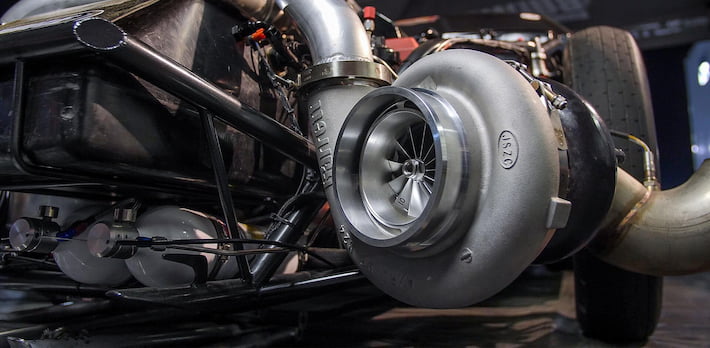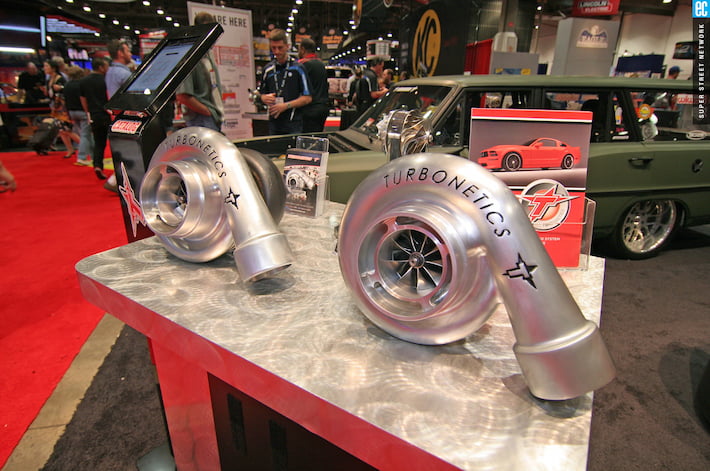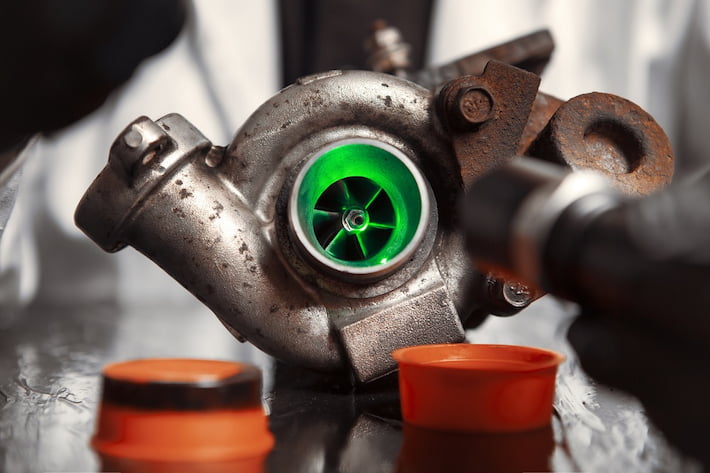Contents
Turbochargers are the car parts that give the engine that extra push when you’re flooring the acceleration pedal. They boost performance by pushing more compressed air in for combustion. You’ll find turbos in almost all engines today, from diesels in utes, to small compact petrol cars. Here they’re more about efficiency, but also provide that additional nudge when you need it. The trend of fitting turbos is also related to lower emissions levels, and cutting down on fuel use by still putting out comparable power to engines with a few cylinders more.
The device isn’t new but has steadily been used in cars for over half a century. First in racing applications, with the incremental improvements in tech and design gradually making their way into everyday cars. This has helped cars maintain a lower displacement while still producing decent power.

How Turbochargers Work
A turbocharger works much like an air pump. In simple terms, a car turbocharger consists of two main parts, a turbine and a compressor. The turbine is powered by the exhaust gases exiting the engine and can reach very high speeds. The turbine is connected with a shaft and bearings to a compressor and the two parts spin in unison. The compressor sucks in air, compresses it and directs that air into the combustion chamber. Of course, a higher quantity of air also means more fuel, and this is the power advantage a turbocharged engine has over standard aspirated engines. While this is a basic take on things and other parts like inlet valves, wastegates, downpipes, intercoolers and connecting pipes also help in redirecting air and keeping it cooler and therefore denser. And cooled and compressed air is the main recipe for better performance.
Differences in Design and Function
There are several types of car turbochargers. They differ in design and how they work. The most common are single-scroll turbos and are the types most people think of. They can be optioned in varying sizes, with bigger turbos good for more torque and horsepower higher up the rev range, while smaller and faster-spinning variants are good for low-end pulling power. The improvements in designs over the years have led to three and four-cylinder engines producing comparable power to older six and eight-cylinder cars while sipping much less fuel and taking up considerably less space.
Twin-turbos are another popular design. They provide better power and efficiency, essentially consisting of two turbines working with different cylinder banks in larger engines, or at different RPMs, so more air is pushed in for combustion over a larger power band. These are more complex to design and calibrate but offer better results.
Twin-scroll variants have revised inlet valves and exhaust manifolds to deliver air at the correct time to sets of cylinders firing at the same time. They allow for better use of exhaust gases and cooler and cleaner air to each cylinder, so are both more efficient, produce more power, and remain cooler in the process.
While these are the more common types, design variations such as variable geometries in the turbine vanes to alter the amount of air at different engine speeds, or the use of electric motors to spin up the compressor at low RPMs, have helped with one of the main gripes of turbos -turbo lag- or the slight hesitance of the turbo before it kicks in and do its thing. The improvements allow for a wide and smooth power band, linear acceleration from a standstill, better engine and combustion efficiency, and lower fuel use.

Advantages of Turbocharged Engines
Aspirated engines are slowly becoming a thing of the past. In the Aussie context, have a look at the engines available for the country’s most popular vehicles – utes. The majority are single-scroll turbodiesels in cars like the Hilux and the entry-level Ranger, while twin-turbos are offered higher up the model lineup. These are miles ahead of the aspirated diesels from a decade or so ago, and better than any petrol ute currently sold. They have a wider power band, more torque readily available early on (so better acceleration), get to highway speeds much faster and use significantly less fuel. Being diesels is another plus, with the huge torque numbers required in hauling goods, or towing.
The same goes for turbocharged petrols, and here a prime example is the turbo Barra engines. Ford caused a stir with the turbocharged V6 engines, some pushing 325kW of power to the back wheels, or roughly 65KW more than the stock 5.4 litre V8s. The smaller engine was also lighter.
So what are the advantages of turbocharged cars over those running a standard aspirated engine? In short, a car turbocharger nets more power (over 30 per cent), more torque, a wider power band, a faster car, less fuel and toxic gases, and lower weight. And to boot, more driving fun. This does come at a cost though, and cars with turbos are a more expensive buy and require some maintenance to keep the turbo in good condition.
Can Turbos Fail?
Early turbos were prone to breakdowns, incapacitating the engine and causing costly repairs. This was mainly due to design flaws and the use of subpar materials for a device spinning at close to 200 thousand RPMs. Modern designs have all but resolved previous issues, but even today turbos fail. The main reasons are:
- Lack of oil and oil starvation – with parts spinning so fast, oil is necessary to correct the air flow rate and pressure. Oil helps lubricate the shaft and bearings, and the lack of lubricant can lead to overheating and damage to the bearings.
- Contaminants in oil, exhaust gases, or filters – contaminated oil is another bearing killer, and turbine wheels can be damaged from any particles in the exhaust and remnants not cleaned by air filters. The latter can result in flying aluminium parts hurled at breakneck speeds towards the internals, with pistons and cranks taking a major hit. Even before this happens, you may see black exhaust smoke, higher oil use, and loss of power.
- Deteriorating oil- this is more of an issue in diesels due to the higher temperatures in diesel engines, as well as the oxidisation of the fuel leading to corrosion and sludge buildup. While the damage is gradual, the turbo won’t function as it was when new. Monitoring the performance of the turbo is done with simple and inexpensive turbo boost gauges.

Other instances that can cause turbo failure are prolonged idling (creating a vacuum in the turbine), hard acceleration with the engine not at optimal working temperatures, and repeated hot engine shutdown causing carbon buildup. If you sense irregular acceleration, changes to the normal rev range when the turbo kicks in, and generally low performance, time for a checkup at the local mechanic. Turbines are expensive pieces of kit, more so when the whole assembly and related parts need to be replaced.



